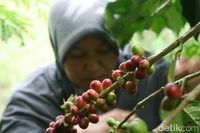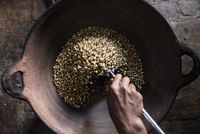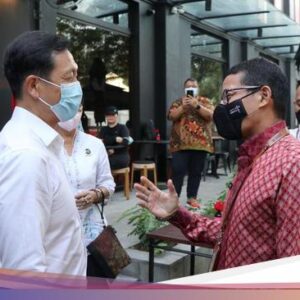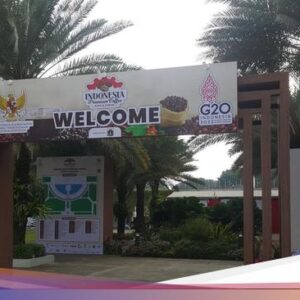Jakarta –
Indonesia is known as one of the largest coffee providers in the world. In fact, coffee initially developed in several countries such as Africa, Arabia and Europe. In Indonesia, coffee has been around since the 17th century by the Dutch, who at that time were colonizing Indonesia.
The history of the development of coffee in Indonesia cannot be separated from the role of the colonialization period in the era of the Vereenigde Oostindische Compagnie (VOC), the Dutch East Indies Trade Alliance which made Indonesia a production center for plantation products including spices and coffee.
ADVERTISEMENT
SCROLL TO CONTINUE WITH CONTENT
Quoted in the book “Indonesian Coffee Science” by Wenny Bekti Sunarharum, Kiki Fibrianto, Sudarminto Setyo Yuwono and Mokhamad Nur, at the end of the 15th century the VOC made an agreement with the Sultan of Banten for a coffee planting project in Java. The development of coffee cultivation began in the 16th to 17th centuries.
 The history of the arrival of coffee in Indonesia. Photo: Special The history of the arrival of coffee in Indonesia. Photo: Special |
More specifically, in 1696 the Dutch brought coffee from Malabar, India to Java. Then this coffee was cultivated in Kedawung, which is located close to Batavia, but failed due to earthquakes and floods. The second attempt to bring in Malabar coffee tree cuttings was successful.
Coffee samples were sent to the Netherlands for research at the Amsterdam Botanical Gardens and the results were successful. Finally, this coffee was used as seeds and developed on many plantations in Indonesia.
After being successful in Batavia, the Dutch then expanded their coffee production in several areas such as Prenger, West Java, North Sumatra, Aceh, Bali and Papua.
 History of coffee plants in Indonesia. Photo: Win Ruhdi Bathin History of coffee plants in Indonesia. Photo: Win Ruhdi Bathin |
And in the era of forced cultivation, the VOC reaped many profits and controlled the coffee trade for more than two centuries.
The history of the development and arrival of coffee in Indonesia cannot be separated from the fertile soil conditions. In Indonesia, all coffee grown in the highlands grows well.
 A brief history of coffee in Indonesia. Photo: Between Photos A brief history of coffee in Indonesia. Photo: Between Photos |
After Indonesia gained independence, the coffee plantations planted by the VOC were finally taken over by the government so that the results were then exported to several countries.
Aceh Gayo Coffee, Mandheling Coffee, Lintong Coffee, Bali Kintamani Coffee and Preanger Javanese Coffee are among the original Indonesian coffee champions which are very popular not only domestically but also abroad.
That’s about the history of coffee plants in Indonesia that you should know, detikers!
(lus/erd)






